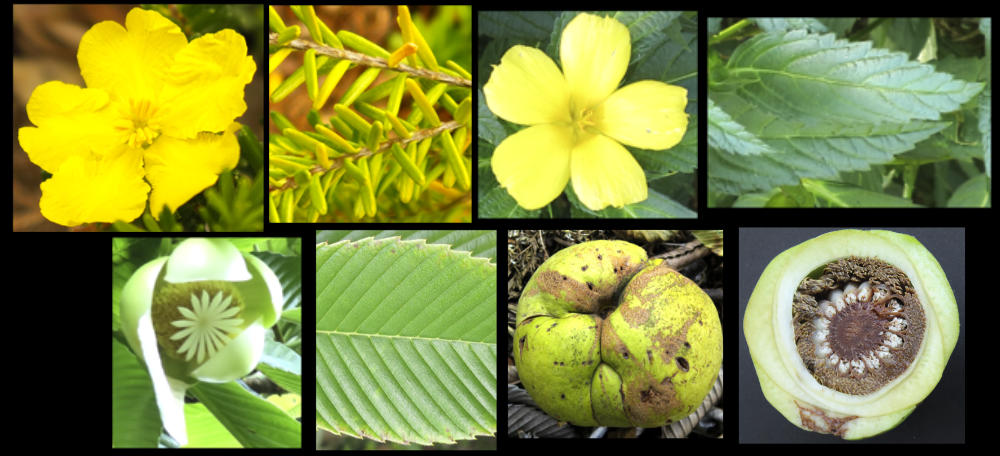Dilleniaceae family.
There are 11 genera with about 425 species.
Genera are Acrotrema, Curatella, Davilla, Didesmandra, Dillenia, Doliocarpus,
Hibbertia, Pachynema, Pinzona, Schumacheria, Tetracera.
Naturally occurring in Australia are Dillenia (1 species), Hibbertia (about 100)
and Tetracera (2).
The Dilleniaceae have many primitive features (including flowers that somewhat resemble
Magnolias) but, in the classification of the Eudicots they are unplaced.
There is a lot of variability in the features among the members of the family.
Most are trees, shrubs or lianas (woody vines) with only a few herbs.
Leaves are mostly alternate and spirally arranged.
They are usually entire with marked veins and a smooth or serrated margin.
The petioles have wings (sometimes called stipules) that clasp the stem.
The white or yellow, bisexual flowers may be solitary or in groups.
The calyx usually has 5 sepals (3-2) that overlap, are persistent and may be fleshy.
The corolla usually has 5 petals (2–7) that overlap and fall off early.
There are usually at least 15 stamens but most flowers have many.
They are basifixed and dehisce via apical pores or longitudinal slits of various lengths.
The 2 to 7 (1-20) carpels may be separate or fused.
Each carpel has a distinct style with an apical stigma.
There are 1 to 80 or 100 ovules in each carpel.
J.F.


